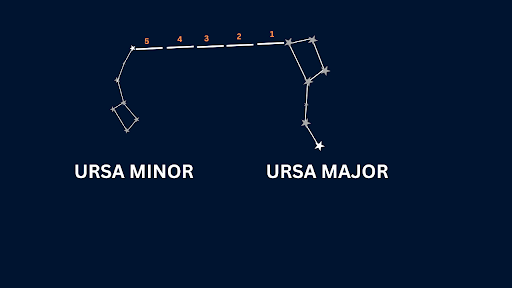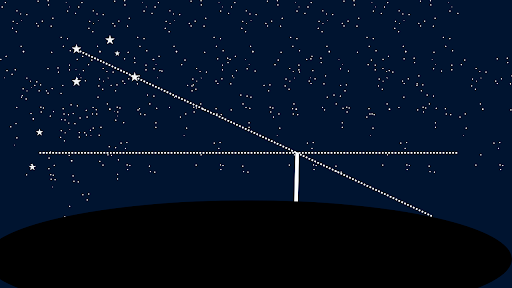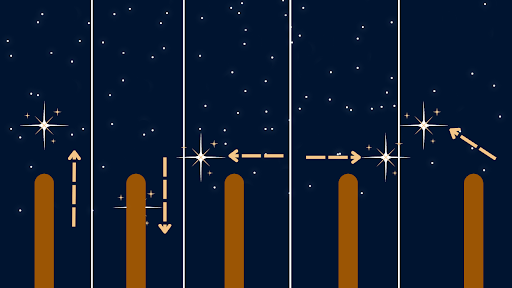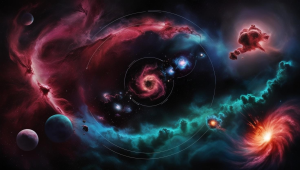
WORMHOLES:COSMIC SHORTCUTS
What if you could rocket from Earth, not to the Moon or Mars, but down a wormhole that loops all the way across the vast Milky Way, slashing travel time
Ever watched a movie about a pirate where the navigator of the ship knows where they are heading just by looking at the stars in the night sky? So, if you ever decide to be a pirate then this will save your life!
In the early era with no compass and technical devices, sailors were left with analog methods of navigating through the seas in search of new lands. One of these methods was navigating using stars. After thousands of years, these systems are still valid and useful, thanks to the observation skills of early astronomers. 
When we look ut at the night sky we see billions and zillions of stars and as we know due to the rotation of the earth these stars are not fixed at one specific point which we can use as a reference point that remains the same no matter what day, week, month or year we are in and will lead us to the same direction. The most important thing to note is that the stars used for navigation vary upon which hemisphere we are in because stars from the northern hemisphere cannot be seen from the southern hemisphere and vice versa.
Northern Hemisphere
In the Northern Hemisphere, the most important and well-known star we can find is the Polaris or the North Star. Locating these stars is not that complex, based on chances Polaris would be on top of the north star with just a fraction of tilt which is why it’s hardly visible moving. Or else look for the constellation Ursa Minor (also known as the Little Bear), the brightest star at the end handle of the constellation is Polaris. We can also opt for finding Ursa Major or the big bear which is more visible and easy to find, the front mouth of the constellation will have two stars named Dubik and Merek and if we follow roughly five times the distance between Dubik and Merek we can find Polaris. As the Polaris will be relatively fixed in the sky, Ursa Major will move and may be covered by various objects from the horizon. So always consider looking for Polaris from a higher altitude (if on the ground).
Southern Hemisphere
Polaris isn’t much help in the southern hemisphere as it is covered by literally the earth. But we can find a better way by finding the southern cross faced by two adjacent points. Now by doing some sketching in our head we can join the longitudinal star’s cross to the equator and extend a line from the midpoint of two adjacent crosses all the way until it intersects the southern cross’s line. Now the intersection point of this figure will lead us to the south, although the south may not be that accurate but it works.
But humans need more than just the north and south direction, and rather than a complex method there’s a more simpler one.
We can easily find north, south, east and west directions i.e which way we are facing no matter where we are in the world. First, find a small stick and stick it to the ground facing a bright star of your choice, wait for a while and after a moment see through the stick if the star moved from its position.
If the star moves upward we are facing east, if it sinks then west, if it shifts to the left then it’s north, if goes right it’s south, if it goes diagonally north then we are facing northwest and so on.
 There are surely some limitations to this system like due to the earth’s rotation it becomes difficult to pinpoint accurately. Cloudy skies or rough seas can also be problematic as it could obscure the stars and the method might not work. It requires a lot of practice and calculation to perform complex navigation. And that is why modern navigation tools have been made for easier navigation like Sexton and GPS (Global Positioning System).
There are surely some limitations to this system like due to the earth’s rotation it becomes difficult to pinpoint accurately. Cloudy skies or rough seas can also be problematic as it could obscure the stars and the method might not work. It requires a lot of practice and calculation to perform complex navigation. And that is why modern navigation tools have been made for easier navigation like Sexton and GPS (Global Positioning System).
Despite limitations in star navigation it still holds its values, understanding star navigation adds a layer of knowledge and appreciation. It’s a skill that may not be daily useful but like knowing how to use a compass or read a map, it becomes a valuable addition to our adventures toolkit.
So the next time you gaze at the stars, remember that it’s not just a spectacle; but classroom and navigational instruments. So let the star guide your journey and embrace the unknown who knows it may illuminate the hidden pathways within yourself!

What if you could rocket from Earth, not to the Moon or Mars, but down a wormhole that loops all the way across the vast Milky Way, slashing travel time

If you go outdoors on a clear evening and also search for it, you might have the ability to see Jupiter beaming brilliantly amongst the celebrities. At the exact same

Stars, the dazzling points of light that fill up the evening skies are the foundation of galaxies plus the cradles of life itself. From their birth in large clouds of

In the mission to recognize deep space mankind has actually developed progressively effective devices to observe deep space. Completion of this venture is the Extremely Large Telescope (ELT) which is

Space debris, also known as space junk, refers to the defunct artificial objects orbiting Earth. These objects include decommissioned satellites, spent rocket stages, and fragments from collisions and explosions.

The search for exoplanets– planets that orbit stars outside our planetary system– has actually quickly developed into one of the most interesting and dynamic fields of astronomy
Write to
Jasmine Gogoi at csr@scientifictemperament.com
Let’s develop our society with a scientific heart. Join us to build the scientifically nurtured future →